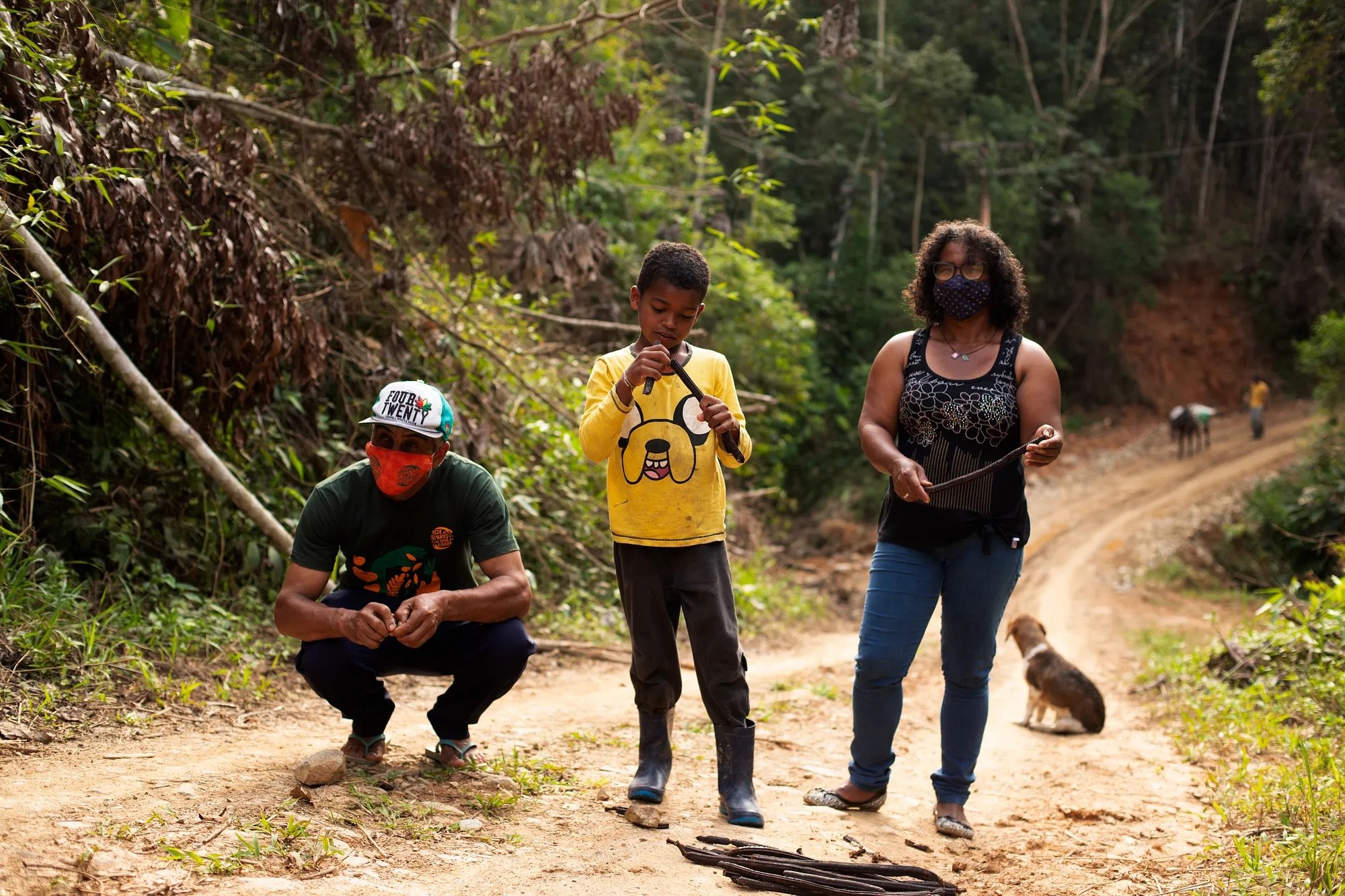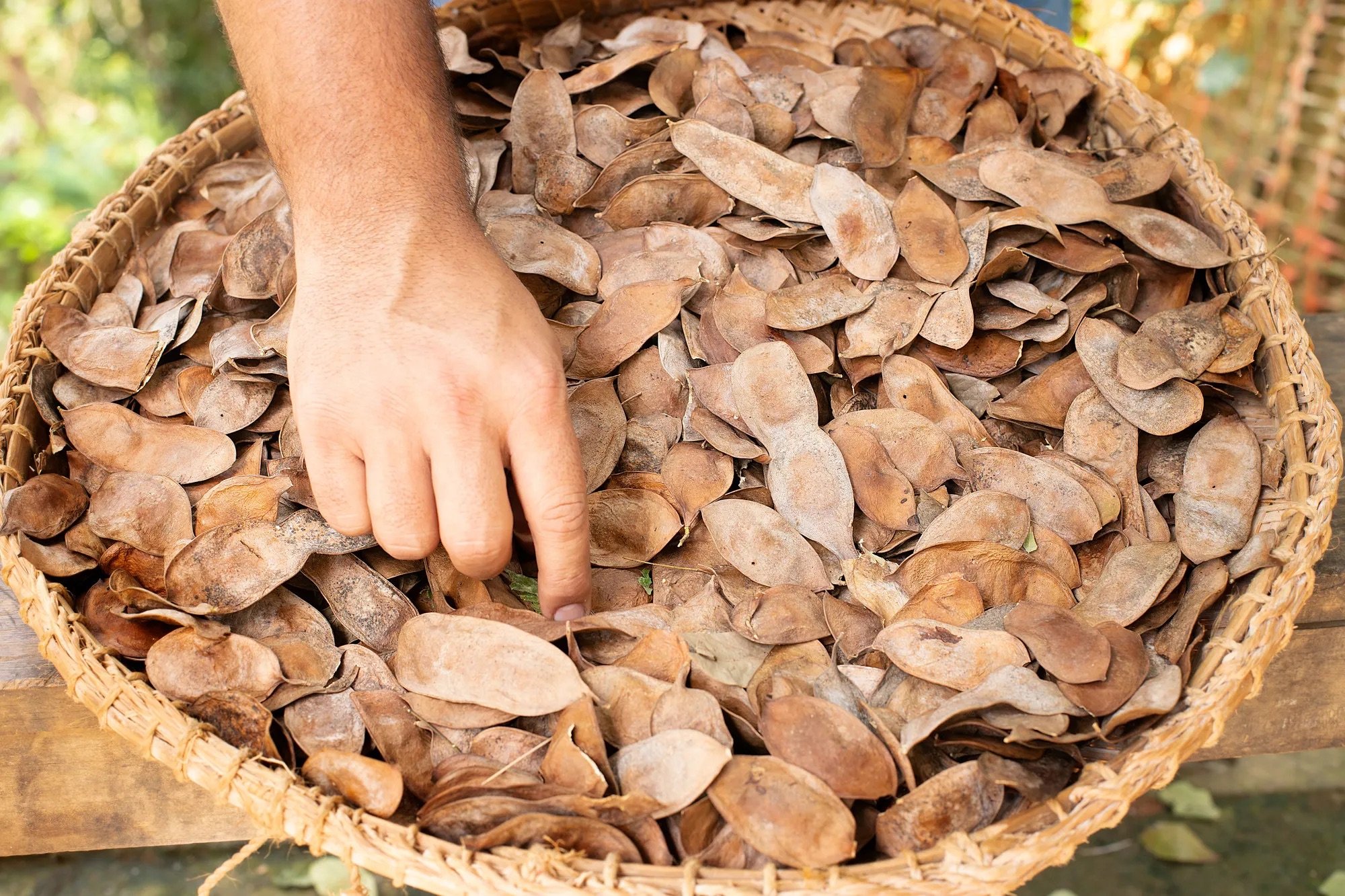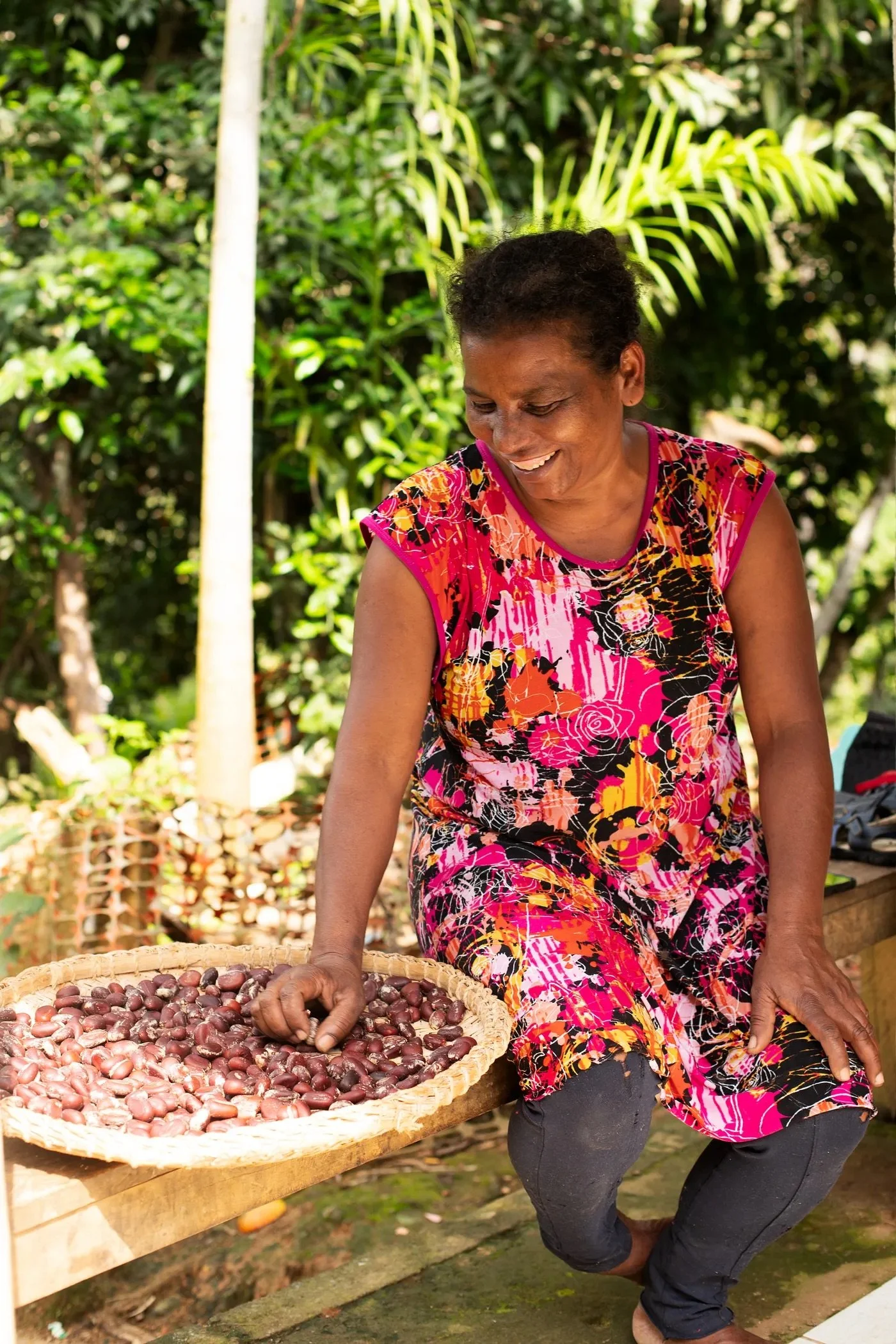
Vale do Ribeira Quilombos
Diversified agriculture on constitutionally recognized lands
Visible sustainability
The community is closer to the coast with substantial additional humidity. This area was just as biodiverse as the Amazon before colonization and before modern agricultural practices. That's the place where you have the biggest communities of Quilombolas in Sao Paulo. You can see the biodiversity from satellite images. This reflects their practices, how they plant, and how they leave the land to regenerate.
Traditional practices
“One of the practices they do have in there is burning in small parts of the lands, when they are going to start producing in this area, which is not, you know, burning everything, it’s just this small part of the land. And this thing was learned with original populations. Because if you go to the Amazon, you will see indigenous people with the same practices. So indigenous people here have these practices, black communities learned from these original populations, and they do the same practice in India; this is very badly seen by the Secretary of Environment and Agriculture. So some of the fights are showing that, yes, they do burn a small part, but they keep the big, big part of it. And after, you know, producing, they leave it to rest.”

“They are trying to make stronger connections, for instance, seeds exchanged from other areas of the country or bringing support from (outside the country). It is (an additional) level of organization, because they already have the basic organization. They already have a storage place, they have trucks, and they have some machinery for agriculture. They are at a level that most of the Quilombolas communities are not.”
— Regarding the capabilities of the Vale do Ribiera Quilombos
Background and Legal Recognition
The Quilombola communities, descendants of Afro-Brazilian escaped slaves, have historically been marginalized within Brazilian society. However, the passage of Brazil's 1988 constitution marked a turning point, offering these communities a legal framework to claim definitive ownership of their lands (Art. 68). Despite this constitutional guarantee, the reality for Quilombola communities has been fraught with challenges. The National Coordination for the Articulation of Quilombola Communities (CONAQ) in 2016 highlighted the grave impacts of state-supported agribusiness and infrastructure projects on Quilombola territories, including violence and environmental degradation. Out of the 1,327,802 Quilombola population, only 4.33 percent live in constitutionally recognized communities, underscoring the vast majority's vulnerability.
Sustainable Practices and Cultural Preservation
Located in the biodiverse valleys of southern São Paulo, these communities have long practiced traditional smallholder agriculture, which not only sustains their livelihoods but also preserves the rich ecological fabric of the region. The practice of agroecology, including regenerative farming, seed exchange fairs, and small-scale burning techniques learned from indigenous peoples, exemplifies a harmonious balance between human activity and nature. These practices have not only preserved but enhanced the biodiversity of the region, making it a stark contrast to the monoculture agriculture that surrounds it.
Economic and Health Resilience
Despite facing barriers to accessing local supermarket chains due to racial prejudice, Quilombola cooperatives have successfully marketed their produce to nearby municipalities, showcasing resilience and entrepreneurial spirit. Public financing for traditional communities has also supported their economic activities. Moreover, during the COVID-19 pandemic, these communities exemplified solidarity by organizing donations of surplus produce to urban centers, enhancing food security and health outcomes.
Climate Perspectives and Community Leadership
The Quilombola communities' response to climate change and environmental challenges is complex, reflecting a blend of traditional knowledge and contemporary realities. Their sustainable land management practices have inadvertently contributed to climate adaptation, though explicit connections to climate change remain underexplored. Strong community leadership and organizational capacity, as seen in their partnership with the Instituto Socioambiental and initiatives like Fabricio's non-profit cooperative, underline the communities' proactive stance towards securing their rights, enhancing economic opportunities, and preserving their cultural heritage.
Conclusion
The Quilombola communities in São Paulo embody resilience, sustainability, and a deep connection to their ancestral lands. Their struggles and triumphs over legal recognition, economic sustainability, health, and environmental stewardship offer invaluable lessons on community-led conservation and social justice. As they navigate the challenges of modernity and environmental change, their story remains a powerful testament to the enduring spirit of resistance and adaptation.

